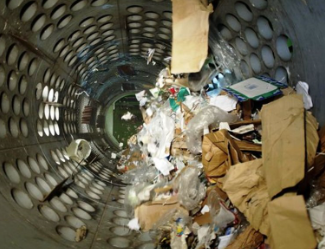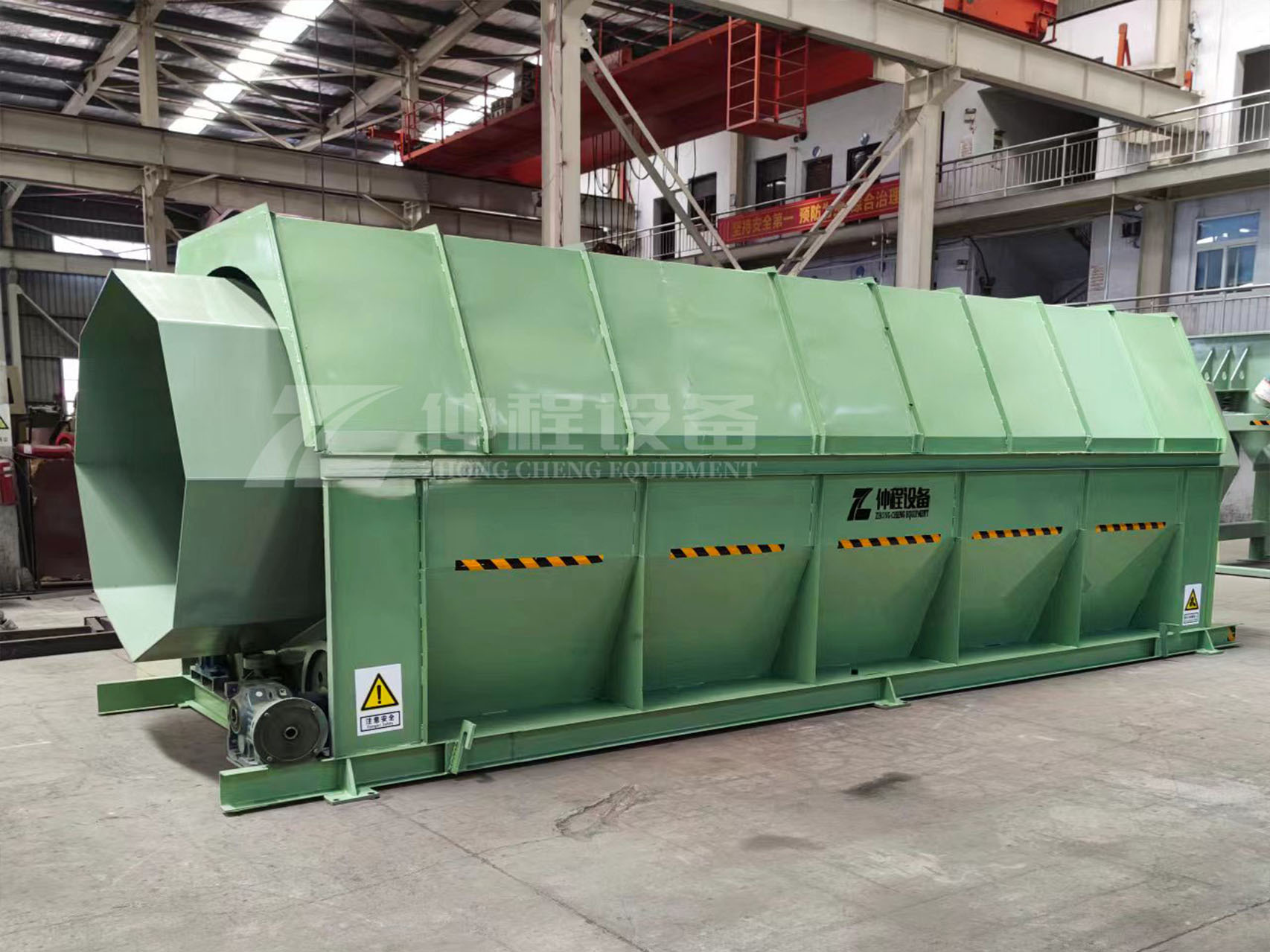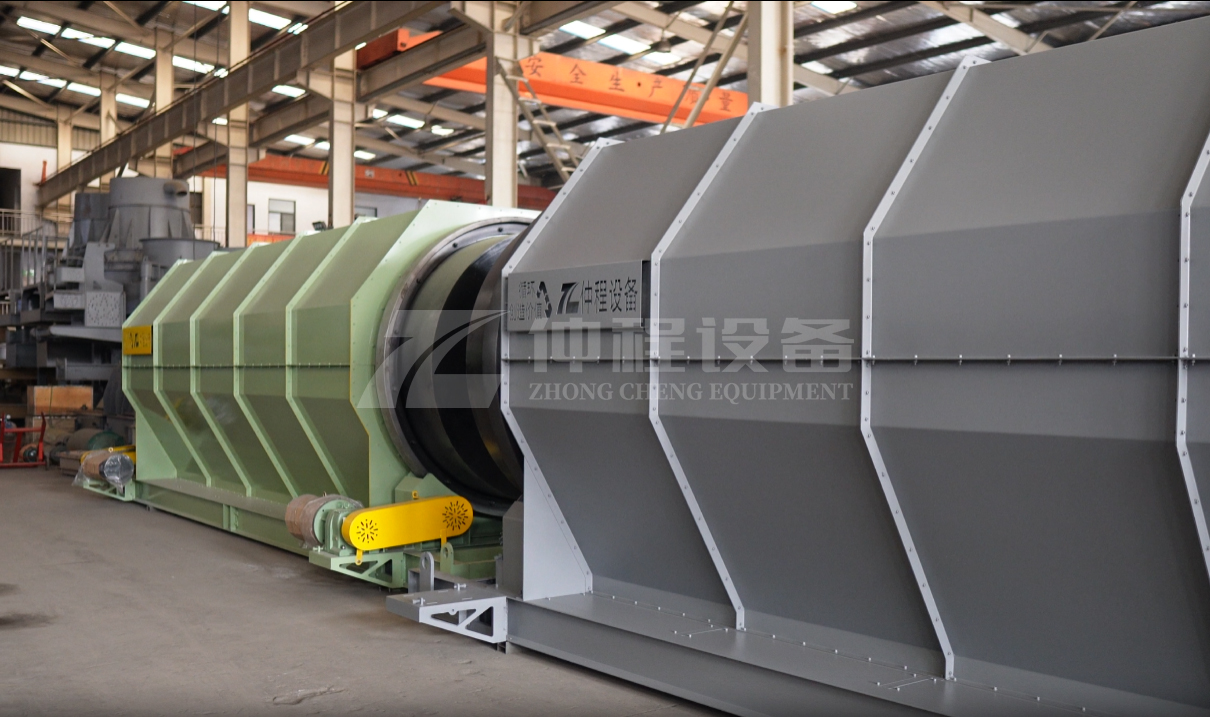Rotary Drum Screens in Modern Waste Management
A rotary drum screen, also known as a trommel screen, is a vital piece of machinery widely used in waste management facilities, particularly in municipal solid waste (MSW) and industrial waste treatment plants. This equipment is essential in the initial stages of waste sorting, playing a critical role in the overall waste management process by effectively separating materials based on their size. This separation allows for more efficient downstream processes such as recycling, composting, or energy recovery.
How the Rotary Drum Screen Works
The rotary drum screen consists of a cylindrical drum that is perforated with holes or mesh of varying sizes, depending on the specific application or material to be processed. The drum itself rotates slowly on its axis, typically at a speed of 10 to 20 revolutions per minute, creating a controlled environment in which the waste can be effectively screened.
Waste material is fed into one end of the rotating drum, which is slightly inclined to encourage material to move from one end of the drum to the other. As the drum rotates, smaller particles that are able to fit through the perforations fall through to the collection area below, while larger materials continue to pass through the drum, exiting at the opposite end.
This separation mechanism works primarily based on the physical properties of the materials, specifically their size and sometimes weight. Larger items, such as bulky plastics or metal objects, stay within the drum and are eventually ejected at the end, while smaller materials like organic matter or shredded paper pass through the holes. By changing the size of the perforations or mesh, the drum screen can be customized for different materials and applications.

Key Applications of the Rotary Drum Screen
The rotary drum screen is particularly useful in pre-sorting waste and preparing it for further processing. Its ability to separate materials into different size fractions makes it a cornerstone of many waste treatment processes, including recycling and composting.
Here are some of the common materials that a rotary drum screen can effectively separate:
Plastic: In many waste streams, plastic waste, especially large pieces, is a major component. The rotary drum screen helps separate large plastic items from smaller items and organic materials, directing them toward recycling facilities where they can be processed further.
Paper: Similarly, paper is another frequent component of MSW, particularly in residential and commercial waste. The drum screen can separate large pieces of paper, such as cardboard, from finer, shredded paper waste. Larger pieces of paper can be sorted for recycling, while smaller particles may be directed toward composting or energy recovery streams.
Organic Matter: Organic waste, such as food scraps, plant material, and yard waste, is typically smaller in size compared to other waste materials like metals or plastic. A rotary drum screen efficiently separates these organic particles, allowing them to be sent to composting facilities or anaerobic digesters, where they are broken down and repurposed into compost or biogas.
Metals: Metals, including aluminum cans, steel, and other scrap, are usually much larger and heavier than other waste materials. These larger, bulkier items remain in the drum as it rotates and are eventually discharged at the end of the screen, where they can be sent to metal recycling centers.
Glass: Glass items, particularly bottles and jars, can also be separated by a rotary drum screen. Glass pieces that do not break easily can be retained in the drum for recycling, while smaller, broken fragments may fall through the perforations.

Advantages of the Rotary Drum Screen
The rotary drum screen offers several advantages that make it a preferred choice in waste sorting and treatment plants:
High Efficiency: The slow and continuous rotation of the drum ensures that materials are separated over time, allowing for thorough screening. This increases the overall efficiency of the process, ensuring minimal waste is sent to landfill.
Customizable Design: Rotary drum screens can be designed with different mesh sizes or perforation diameters, making them adaptable to various types of waste materials. This flexibility allows for precise separation depending on the size or type of material being processed.
Durability: Rotary drum screens are designed to handle large volumes of waste and are built to withstand the harsh conditions typical of waste management environments. They are usually made from heavy-duty materials such as stainless steel, which resists wear and corrosion, ensuring long-term reliability.
Low Maintenance: Due to their simple mechanical structure, rotary drum screens require minimal maintenance compared to more complex sorting machinery. This can lead to cost savings in terms of repairs and downtime.
Scalability: Rotary drum screens can be used in waste processing plants of various sizes, from small facilities handling limited waste streams to large-scale operations managing hundreds of tons of waste per day.
Environmentally Friendly: By aiding in the efficient sorting of materials, rotary drum screens help divert recyclables and compostable materials from landfills, contributing to more sustainable waste management practices.
Applications Beyond MSW
While rotary drum screens are most commonly associated with municipal solid waste (MSW) treatment, they are also widely used in other industries. In industrial waste processing, for instance, these screens can help sort and separate construction and demolition (C&D) waste, hazardous waste, and even mining byproducts. The versatility of the machine makes it suitable for a wide array of applications beyond just household waste.
In addition, rotary drum screens are frequently used in wastewater treatment facilities to separate organic matter and other fine particulates from liquid streams. This ability to adapt to different environments further highlights the versatility of the rotary drum screen.

Conclusion
The rotary drum screen is an indispensable tool in modern waste management and treatment plants. Its ability to efficiently separate materials based on size ensures that different components, such as plastic, paper, organic matter, metals, and glass, are directed to the appropriate processing streams. This not only enhances the overall efficiency of waste treatment but also supports recycling efforts, contributing to more sustainable and environmentally friendly waste management practices.
With its customizable design, durability, and low maintenance requirements, the rotary drum screen remains one of the most widely used and effective machines in the waste processing industry. As the global focus on waste reduction and recycling grows, the importance of equipment like the rotary drum screen will only continue to increase, ensuring that waste is managed in the most efficient and eco-friendly way possible.
-
 Trommel screenTrommel screen, also known as drum screens, are widely used in various industries for sorting and separating materials.Get Quote
Trommel screenTrommel screen, also known as drum screens, are widely used in various industries for sorting and separating materials.Get Quote -
 Crop straw double shaft shreddApplications:Biomass Energy Production: Shredded straw can be used as a feedstock for bioenergy plants to produce electricity or heat.Livestock Feed: Reduced-si...Get Quote
Crop straw double shaft shreddApplications:Biomass Energy Production: Shredded straw can be used as a feedstock for bioenergy plants to produce electricity or heat.Livestock Feed: Reduced-si...Get Quote -
 Zhongcheng Air Drum SeparatorAir drum separators effectively separate lightweight materials (e.g., plastics, paper) from heavier materials (e.g., metals, glass). This high efficiency is cru...Get Quote
Zhongcheng Air Drum SeparatorAir drum separators effectively separate lightweight materials (e.g., plastics, paper) from heavier materials (e.g., metals, glass). This high efficiency is cru...Get Quote
-
2024-06-06Drum Screen For Composting PlantDrum screen, also known as a rotary drum screen or trommel screen, is an essential piece of equipment used in composting plants for the separation of compost ma...
-
2023-01-12Horizontal Semi-Auto Hydraulic BalerSemi automatic balers are used across the logistics, recycling and manufacturing sectors to process large volumes of waste materials such as cardboard, film, pa...
-
2023-01-12Vibrating ScreenVibrating screen is a mechanical device used to separate materials into different sizes and grades by vibrating them through a mesh or screen. This equipment is...
-
2024-04-13Wobbler FeederWobbler feeder is a type of feeding equipment that uses rotating elliptical bars, known as wobblers, to separate materials based on size and type before they re...
-
2023-01-12Waste Baler For MSWHigh density solid waste balers are the final step before sending waste to landfill. Horizontal balers designed and manufactured for this difficult job and prov...



